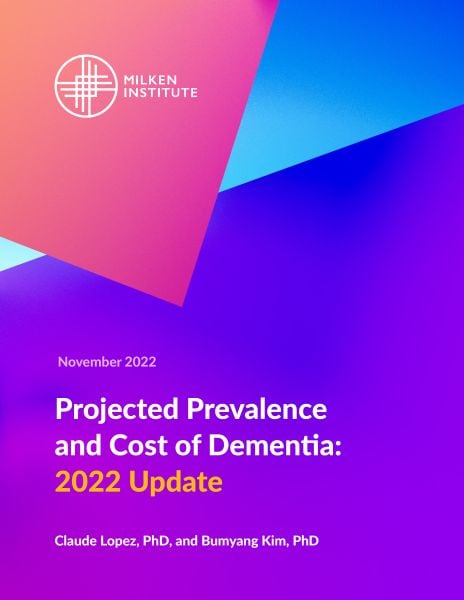
Projected Prevalence and Cost of Dementia: 2022 Update
The 2022 update on Alzheimer's Disease and Related Dementias (ADRD) highlights that:
-
The treatment prevalence and related costs have significantly increased in the past 10 years → + 31 percent since 2012 to $2.43 million. The latest estimates show that $47.5 billion are spent on comprehensive medical care and $12.8 billion on ADRD treatments.
-
When it comes to ADRD and its costs, age matters → Eighty-four percent of treated ADRD cases are from age 75 and up. They account for 91 percent of ADRD-treatment expenditures and 83 percent of total medical expenditures.
-
The gender gap remains, yet the cost of treatments for men living with ADRD is catching up with women’s → Women account for about 20 percent more cases than men. Yet, the medical expenditures of all the treatments per man living with ADRD have increased by 37 percent, compared to 3 percent for women, over the same period.
-
Age worsens the gender gap in ADRD treatment prevalence and its related cost. → Women age 85 and older have a treatment prevalence 37 percent higher than men. The same gap is reflected in the ADRD-treatment expenditures.
-
Minorities tend to underreport ADRD → This update includes, for the first time, the distribution of treatment prevalence by race and ethnicity. It shows how important this factor is in unreported ADRD: Reported ADRD cases are less than six times the estimated prevalence for non-Hispanic Blacks and less than four times for Hispanics compared to three times for non-Hispanic Whites.
-
Comorbidity plays a significant role in the overall cost of ADRD treatment → Total medical expenditures for individuals living with ADRD are almost 3.7 times higher than ADRD-treatment expenditures, implying coexisting medical conditions in addition to ADRD among those 65 and older. Inpatient care, home health care, and medication drive a large part of these expenses, around 75 percent.
-
By 2060, the ADRD population and the related treatment expenditure will have more than doubled → ADRD-treatment expenditures will increase to $45 billion in 2040 and $102 billion in 2060. The total expenditures related to ADRD will increase to $113 billion in 2040 and $255 billion in 2060. The difference in expenditures between genders will increase to 3.3 times by 2040 and seven times by 2060. The older age group will continue to have the most significant total ADRD-treatment expenditure.




